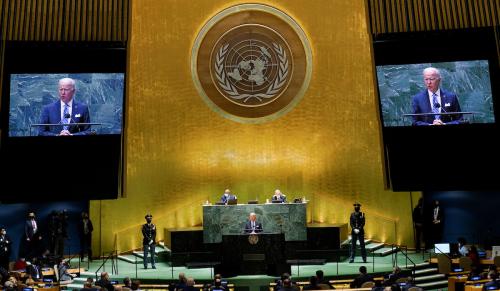Restoring opportunity in the United States is not terribly complicated. It will require an activist government and individual responsibility. That means a strong focus on job creation right now, combined with efforts to reduce debt, improve education, and strengthen families over the longer-run.
Success on these fronts is undermined not by a lack of knowledge about what to do, but by partisan arguments that ignore the kind of common-sense consensus that might otherwise prevail.
An update of my earlier work on economic mobility in the US, coauthored with Julia Isaacs and Ron Haskins and recently released by the Pew Charitable Trusts, confirms that there is less economic mobility in America than many believe, especially at the top and bottom of the distribution of income and wealth.
A child’s chances of ending up in the middle class or above that level are more than twice as high for those born into an affluent family (the top 20 percent) as for those born in a poor family (the bottom 20 percent).
President Obama has given this issue prominent attention, especially in the speech he gave in Osawatomie, Kan., on Dec. 6 last year. He emphasized the importance of working hard and playing by the rules but stressed that those who do so should have a “fair shot” at the American Dream.
Former Gov. Mitt Romney’s position is not terribly different, although, in deference to his more conservative base, he stresses the need for greater personal responsibility and playing by the rules as the best route to success in life.
In a speech at Liberty University on May 12, again citing Brookings research, he noted that the chance of achieving the American Dream is greatly enhanced if a person does just three things: finishes high school (at least), works full-time, and waits to have children until marriage. Those who do all three things have a 74 percent chance of joining the middle class.
These views are not all that different, and few people would disagree with the need for people to both play by the rules and live in a society that provides a fair shot at climbing the opportunity ladder.
What might this mean in practice? First, more support in the form of infrastructure spending and low taxes (at least for businesses and the middle class) to reduce unemployment in the short-term. Combine that with a grand bargain on the federal deficit for the longer term.
Second, continuing reforms of the education system involving expanded preschool, higher standards, greater accountability, better teachers, and more lifelong learning through community colleges and online learning.
Third, greater media attention and more government and philanthropic support for nongovernmental institutions that are trying to reduce an explosion of unplanned pregnancies and births to single women in their twenties. That surge has now made unwed childbearing the norm for women under 30, more than half of whom give birth out of wedlock.
This agenda, to be sure, barely scratches the surface of possible actions. But because it combines the values of liberals and conservatives alike and calls for both personal responsibility and responsible government policies, it has the potential to restore the kind of opportunity that Americans have long taken for granted as their birthright.
Presidential candidates and members of Congress, are you listening?



Commentary
Op-edBring Back the American Dream? It’s Not That Hard.
July 17, 2012